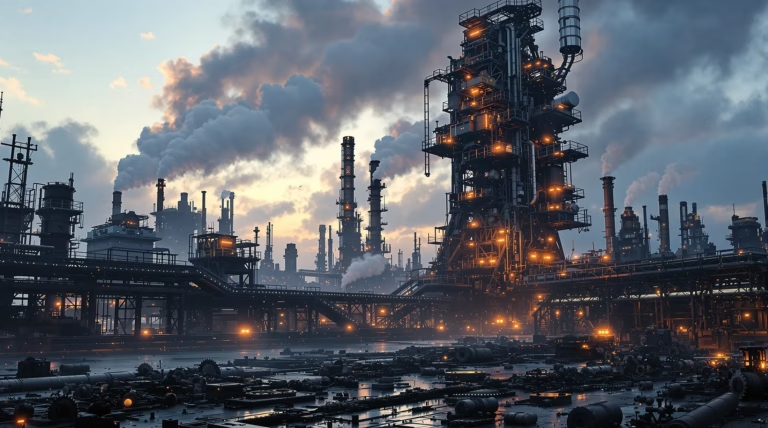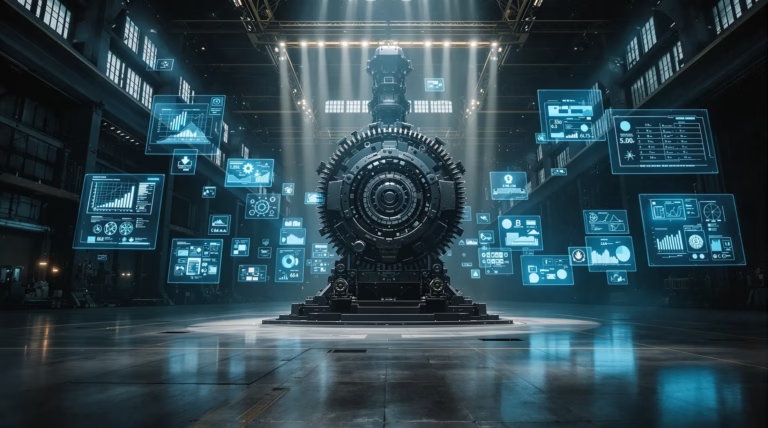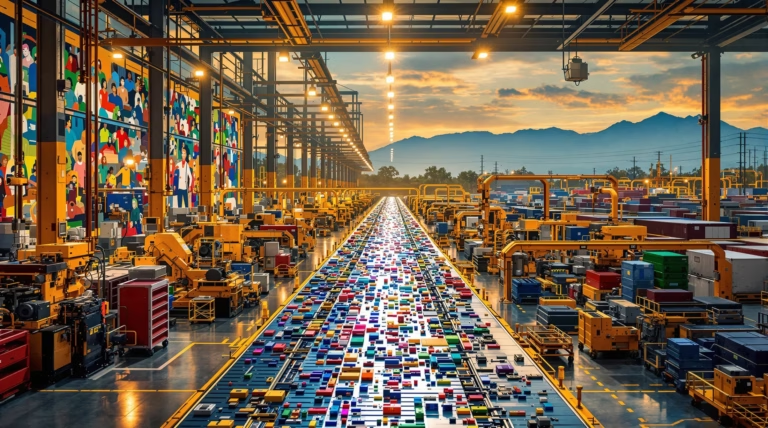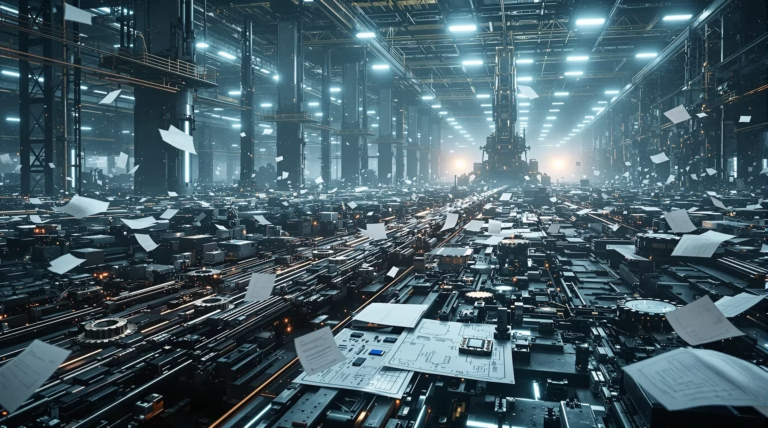Manufacturing Sustainability: Strategies for a Greener Future
In today’s rapidly evolving industrial landscape, manufacturing sustainability has become a critical driver of innovation and competitive advantage. Let’s explore how sustainable manufacturing practices are reshaping the industry and creating opportunities for a greener future.
Understanding Manufacturing Sustainability
Manufacturing sustainability represents a fundamental shift in industrial production processes. This approach integrates ecological considerations throughout the entire production cycle, from design and material selection to end-of-life product management. Over recent decades, it has evolved from a niche consideration into a mainstream business imperative, balancing environmental stewardship with economic viability.
Defining Sustainable Manufacturing
Sustainable manufacturing, or green manufacturing, encompasses the creation of products through environmentally conscious processes. This holistic approach focuses on three key pillars:
- Environmental protection – minimizing ecological impact and resource consumption
- Social responsibility – ensuring fair labor practices and community benefits
- Economic prosperity – maintaining business viability while pursuing sustainability
The Importance of Eco-Friendly Production
The transition to eco-friendly production has become essential for modern manufacturers, driven by both market demands and environmental imperatives. Research indicates that 73% of global consumers are willing to modify their consumption habits to reduce environmental impact. This shift offers manufacturers multiple advantages:
- Enhanced operational efficiency and reduced costs
- Improved supply chain resilience
- Reduced regulatory risks
- Stronger competitive positioning
- Increased innovation opportunities
Key Challenges in Achieving Manufacturing Sustainability
The implementation of sustainable manufacturing practices presents significant challenges that require careful navigation. These challenges encompass both operational and strategic considerations, from initial investment requirements to supply chain complexity.
Resource Efficiency and Waste Reduction
Optimizing resource efficiency remains one of the most pressing challenges in sustainable manufacturing. The transition requires:
- Fundamental redesign of manufacturing processes
- Implementation of circular economy principles
- Management of diverse waste streams
- Development of sophisticated recycling programs
- Significant capital investment in specialized equipment
- Training and dedication of specialized personnel
| Challenge Area | Impact | Solution Requirements |
|---|---|---|
| Resource Management | Material waste, energy inefficiency | Process redesign, advanced monitoring systems |
| Waste Handling | Complex waste streams, contamination risks | Specialized equipment, waste segregation protocols |
| Economic Viability | High initial costs, delayed returns | Long-term planning, cost-benefit analysis |
Emissions Reduction and Pollution Control
Emissions reduction represents one of manufacturing’s most complex sustainability challenges. Production processes inherently generate various pollutants that impact climate change and air quality, including greenhouse gases, volatile organic compounds, and particulate matter. Implementing effective solutions often requires fundamental operational changes that can significantly impact established systems and budgets.
- Air quality management and emissions control
- Wastewater treatment and management
- Soil contamination prevention measures
- Noise pollution reduction strategies
- Carbon capture and storage solutions
- Advanced filtration systems implementation
- Closed-loop water treatment processes
Progressive manufacturers are shifting toward holistic pollution prevention strategies rather than end-of-pipe treatments. This approach focuses on eliminating pollutants at their source through innovative product design and process modifications, creating more sustainable long-term solutions for environmental protection.
| Compliance Aspect | Challenges | Strategic Approaches |
|---|---|---|
| Global Operations | Variable regional requirements | Dedicated compliance teams, local expertise |
| Future Planning | Evolving standards | Proactive adaptation, technology investment |
| Documentation | Administrative burden | Systematic management systems |
The regulatory landscape for manufacturing sustainability grows increasingly complex, with requirements varying significantly across jurisdictions. Global manufacturers face particular challenges in navigating diverse environmental regulations, from chemical usage limits to waste disposal protocols.
Forward-thinking companies are transforming regulatory compliance into a competitive advantage. By developing systematic approaches to environmental performance and staying ahead of regulatory changes, these manufacturers can access markets with stringent environmental standards while others struggle to adapt. This proactive stance on compliance management has become essential for long-term success in the global manufacturing sector.
Strategies for a Greener Manufacturing Future
The manufacturing sector is undergoing a fundamental transformation toward sustainability. Industry leaders are implementing comprehensive strategies that combine process redesigns, technological innovation, and renewable energy adoption. This integrated approach not only reduces environmental impact but also enhances operational efficiency and market competitiveness.
Adopting Technological Innovations
Advanced manufacturing technologies are revolutionizing sustainable production practices. Automated systems optimize production parameters with unprecedented precision, while additive manufacturing eliminates traditional waste streams. The industrial Internet of Things (IoT) enables real-time monitoring and efficiency optimization, while AI-powered predictive maintenance prevents resource waste from equipment failures.
- Advanced automation systems for waste reduction
- Additive manufacturing for material optimization
- IoT devices for real-time monitoring
- AI-powered predictive maintenance
- Smart manufacturing solutions
Integrating Renewable Energy Sources
Renewable energy integration represents a transformative opportunity in manufacturing sustainability. On-site generation through solar, wind, or biomass installations provides both environmental benefits and energy independence. Many facilities are leveraging previously unused spaces for renewable infrastructure, creating new value from existing assets.
- On-site solar panel installations
- Wind energy integration
- Biomass facility development
- Power purchase agreements (PPAs)
- Energy storage solutions
- Smart grid technology implementation
Utilizing Smart Systems and Predictive Analytics
Smart systems are revolutionizing manufacturing sustainability through advanced monitoring, analysis, and resource optimization capabilities. Industrial Internet of Things (IIoT) sensor networks deployed throughout production facilities collect real-time data on energy consumption, water usage, material flows, and equipment performance. These sophisticated systems can identify subtle variations undetectable to human observation, from microscopic compressed air leaks to minor equipment performance deviations that indicate developing inefficiencies.
- Real-time monitoring of resource consumption patterns
- Detection of microscopic system inefficiencies
- Continuous performance optimization
- Automated inventory management
- Predictive quality control systems
- Energy usage optimization
- Heat recovery identification
Benefits of Sustainable Manufacturing Practices
Sustainable manufacturing delivers compelling advantages that extend beyond environmental stewardship. Companies implementing green manufacturing principles achieve significant operational improvements while advancing global sustainability goals. The business case continues to strengthen as environmental responsibility increasingly aligns with economic success.
Achieving Cost Savings and Efficiency
| Area | Benefit | Impact |
|---|---|---|
| Energy Management | 15-30% consumption reduction | Direct utility cost savings |
| Resource Utilization | Minimized waste | Reduced raw material expenses |
| Equipment Maintenance | Extended lifespan | Lower replacement costs |
Gaining Market Advantage and Consumer Trust
- 73% of consumers willing to change habits for environmental impact
- 66% ready to pay premium prices for sustainable products
- Enhanced access to corporate and government contracts
- Strengthened supply chain partnerships
- Improved brand loyalty and reputation
Enhancing Resource Security and Risk Mitigation
Sustainable manufacturing strengthens resource security by reducing dependence on volatile supply chains through circular economy principles and material recapture systems. These practices provide crucial buffers against supply disruptions and geopolitical uncertainties while creating strategic resilience.
- Protection against regulatory compliance risks
- Reduced exposure to carbon pricing mechanisms
- Mitigation of reputational risks
- Enhanced investor confidence
- Improved supply chain resilience
- Better positioning for long-term viability







